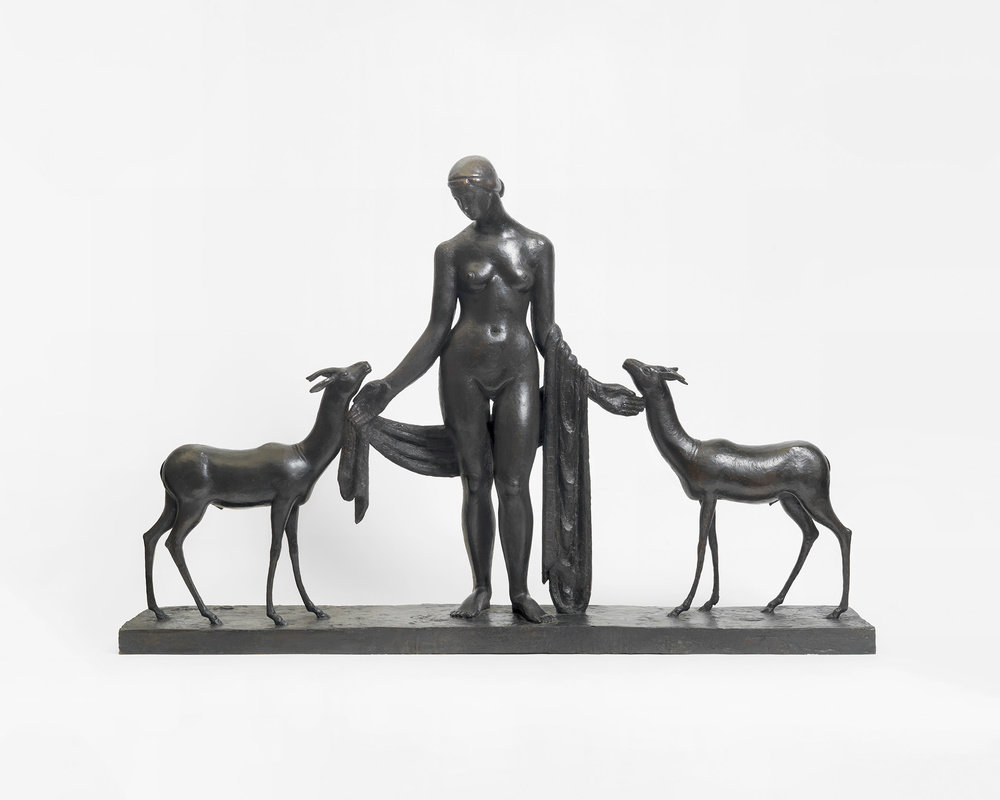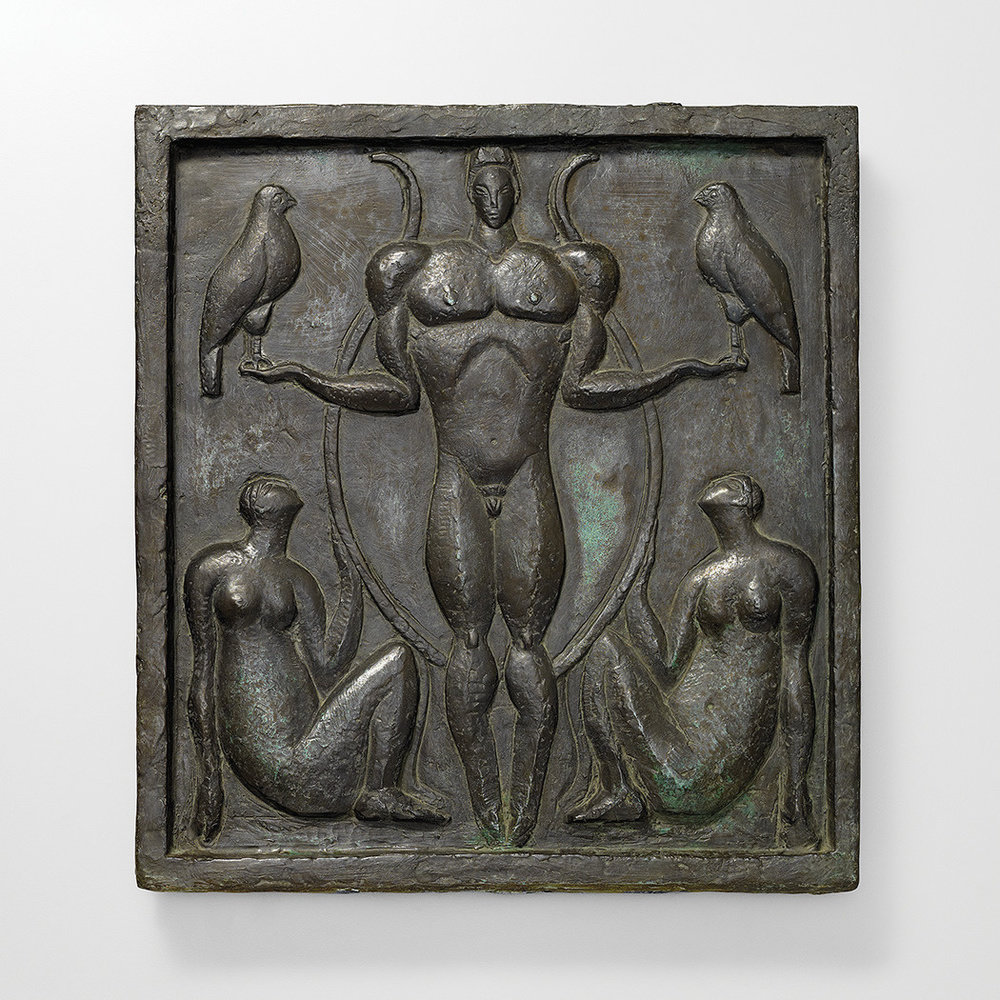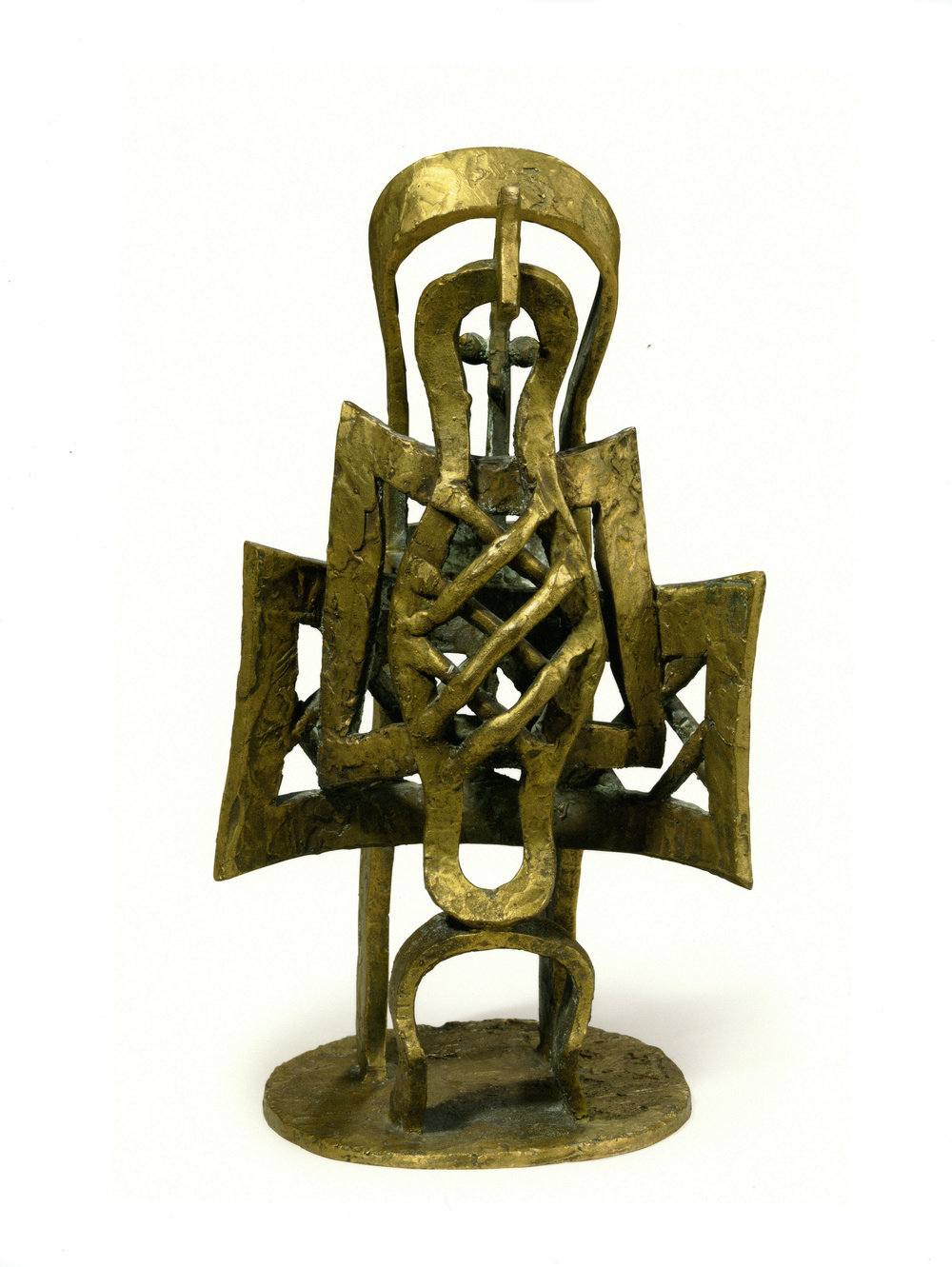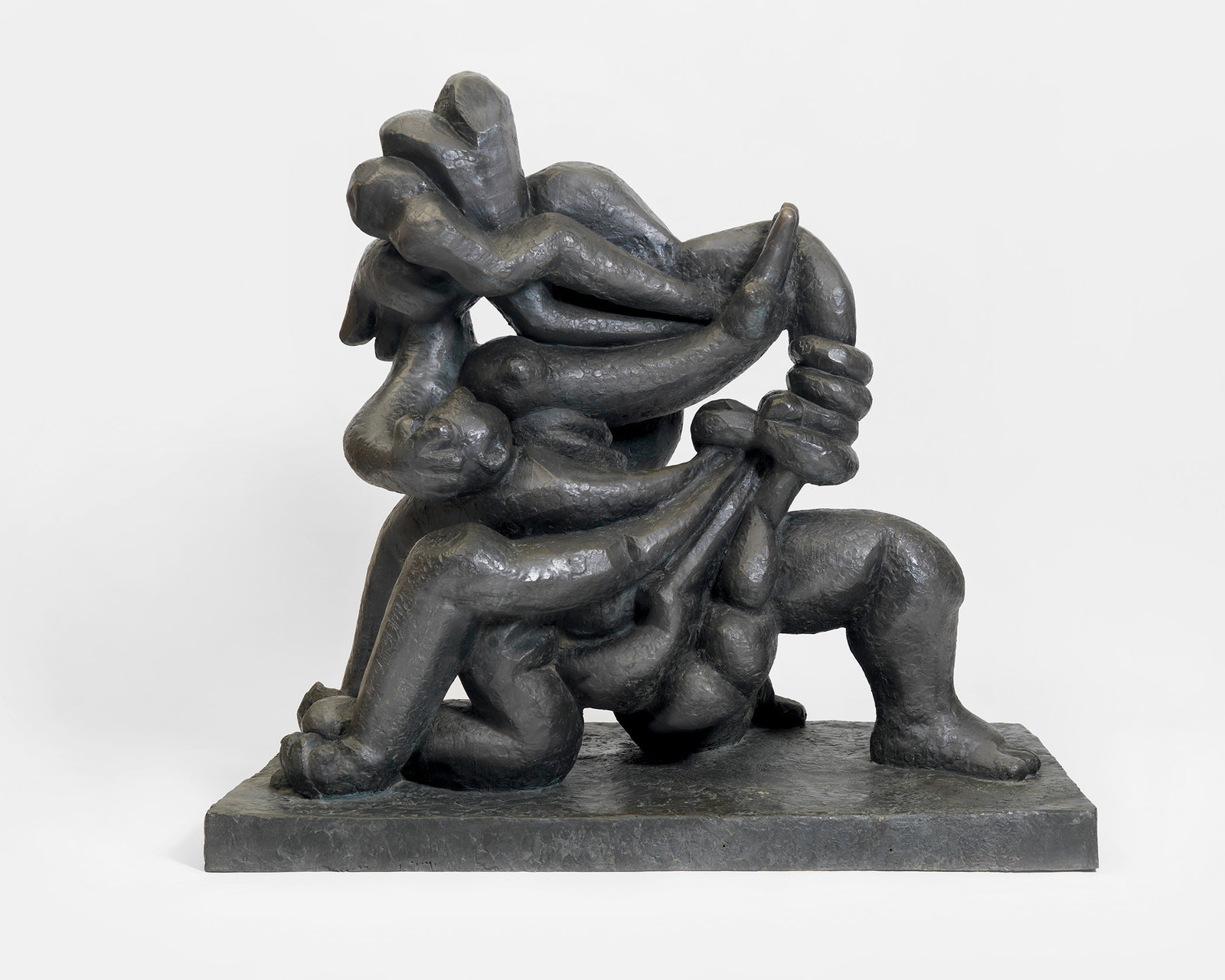The Directors of Marlborough Gallery are pleased to announce Jacques Lipchitz: Selected Sculpture and Drawing from 1911 to 1972, an extensive survey of the 20th Century master’s varied oeuvre, which will open on October 22nd and remain on view through November 21st. 82 sculptures as well as 47 drawings are featured in this overview of the career of Jacques Lipchitz. An illustrated catalog will be available at the time of the exhibition.
Born in Lithuania in 1891, Lipchitz arrived in Paris in 1909 where he quickly became acquainted with key members of the avant-garde and began working as a sculptor. The young artist was particularly drawn to the work of Picasso and the two became friends after an introduction from Diego Rivera. Lipchitz created important Cubist sculptures predominantly in bronze. Among the earliest sculptures on view is Woman and Gazelles (1911), a bronze work that was extremely well received at the 1913 Salon d’Autumne and marked the artist’s first major public exhibition. Soon the sculptures began to feature Cubist planes and faceted figuration. Reliefs in stone also number among the works on view. Featured in the exhibition are works such as the columnar Bather III (1917) and Repentant Magdalene (1921) which Lipchitz considered one of his most successful abstract pieces as it achieved the form of “an asymmetrical pyramid intersecting a curving mass."
In 1925 he began creating his influential “Transparents.” These groundbreaking sculptures, which were much admired by Picasso as well as sculptor Julio Gonzalez, were created after the artist watched a harpist making music. The voids within the sculpture were as crucial to the works as the solid forms, and the bronzes effectively reinvented the prevailing methodologies. Throughout his career, Lipchitz revisited themes of music (Musical Instruments, 1923), mythology (Prometheus Strangling the Vulture, 1943), the mother and child (Mother and Child II, 1949) and biblical stories (Hagar in the Desert, 1969). In works from every period, Lipchitz was enthusiastically involved with the complex casting process and was a lifelong innovator of the medium.
Shortly after fleeing Paris for New York in 1941, Lipchitz began exhibiting at the Buchholz Gallery, New York, and continued to show in galleries and museums until his death in 1973. His first exhibition with Marlborough was in 1966. His work has been included in group and solo exhibitions at the Museum of Modern Art, New York; Tel Aviv Museum of Art, Tel Aviv, Israel; The Phillips Collection, Washington, D.C.; Neue Nationalgalerie, Berlin; Centre Pompidou, Paris, France; The Musee National d’art Modern, Paris, France; The Museo de Bellas Artes, Bilbao, Spain; Institut Valencià d’Art Modern, Valencia, Spain, and The Uffizi, Florence, Italy, among many others. Public installation of sculptures include Les Jardins du Palais Royal, Paris, France and The Yorkshire Sculpture Park, Wakefield, England. He also fulfilled a number of private and public commissions internationally and in the United States.
The work of Jacques Lipchitz is included in the collections of over one hundred museums, including Centre Pompidou, Paris, France; Centro Museo de Arte Reina Sofía, Madrid, Spain; The Metropolitan Museum of Art and The Museum of Modern Art, New York; Musée d’Art Moderne de la Ville de Paris, Paris, France; The National Gallery of Art, Washington, D.C., Tate Gallery, London, England; Tel Aviv Museum of Art, Tel Aviv, Israel; Fondation Beyeler, Riehen, Switzerland; The Detroit Institute of Arts, Detroit, Michigan, and The Whitney Museum of American Art, New York.
Works





